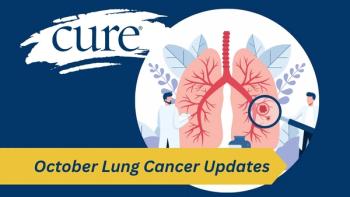
Highlights from the San Antonio Breast Cancer Symposium 2008
Recap of the 2008 San Antonio Breast Cancer Symposium.
Doctors have known for years that hormonal therapies are effective at treating women with hormone-sensitive breast cancers (those positive for the estrogen or progesterone receptors).More recently, it has been shown that five years of an aromatase inhibitor appears to be slightly better than tamoxifen in terms of lowering the risk of recurrence in postmenopausal patients, as is two years of tamoxifen followed by three years of an aromatase inhibitor.
But questions remained about switching from one type of drug to another for postmenopausal women: Is it best to start with tamoxifen and then switch to an aromatase inhibitor (AI), or should the AI come first? And is the sequential use of both agents better than treatment with either one alone?
Offering some answers were new data from the BIG (Breast International Group) 1-98 trial, a phase III study involving more than 8,000 women with early-stage breast cancer. Previous results reported in 2005 showed five years of the aromatase inhibitor Femara (letrozole) was more effective than five years of tamoxifen, so the purpose of the updated analyses was to determine whether giving both agents in a sequence would work better than Femara alone.
The amended BIG 1-98 trial compared five years of Femara, two years of Femara followed by three years of tamoxifen, and two years of tamoxifen followed by three years of Femara. There was no evidence that the sequential treatments improved disease-free survival compared with Femara alone. But after two years of initial treatment with Femara, the patients who switched to tamoxifen for three years “couldn’t be distinguished” from patients treated with Femara for the entire five years, study investigator Alan Coates, MD, of the University of Sydney in Australia, told CURE at the meeting.
The combination of Tykerb (lapatinib) and Femara (letrozole) may offer a first-line oral treatment approach for postmenopausal women with hormone receptor-positive, HER2-positive metastatic disease deemed suitable for endocrine therapy.
In women with hormone receptor-positive and HER2-positive tumors, treatment with a combination of Tykerb and Femara delayed the time to disease progression slightly over five months longer than treatment with Femara alone, according to data from the EGF30008 study undertaken by Stephen Johnston, MD, a researcher at the Royal Marsden Hospital in London.
EGF30008 was a study of first-line treatment for 1,286 postmenopausal women with advanced breast cancer and tumors that were hormone receptor-positive. In a subgroup of 219 women with tumors that were both hormone receptor-positive and HER2-positive, treatment with Femara alone resulted in a median progression-free survival of three months, compared with more than eight months for patients treated with the combination.
Chemotherapy given after surgery for early-stage breast cancer clearly helps improve the cure rate, but details of exactly what drugs, what dosage, and what schedule are still not established. Regimens that include Cytoxan (C), anthracyclines (like Adriamycin, A), and a taxane (like Taxol and Taxotere) are typically used.The NSABP B-30 study tested four cycles of AC followed by four cycles of Taxotere (T), shorter regimens of AT, and all three drugs (TAC) given together for four cycles.
Of these three regimens, the sequential longer regimen was the best in terms of recurrence risk, but also had the most short-term side effects. Another observation was that premenopausal women, who stopped their periods, had fewer recurrences than those that did not—an observation that has been made with other studies and could relate to estrogen withdrawal.
However, since more women stopped their periods on the longer regimen, it is not clear whether the longer administration of chemo itself or the withdrawal of ovarian function and the associated lowering of estrogen played a role. There is a large worldwide study to confirm whether or not suppression of the ovaries can help, but for now, it is not considered standard. So, it appears that the longer sequential chemotherapy regimen might be best for women at higher risk.
Another study, called the BCIRG 005, compared the TAC regimen, but given in the more common way of six cycles, to AC followed by Taxotere, for a total of eight cycles. These were equivalent in terms of recurrence, but while TAC had more fever associated with low white blood cell counts, the sequential treatment had more muscle pain. Therefore, apart from fever and low white blood cell counts, it looks like TAC might be easier and shorter to give. However, we know that AC followed by weekly Taxol for 12 weeks is better than the AC followed by Taxotere based on a prior study initially presented several years ago.
So, at this point, we at least know that sequential therapy is best from the NSABP B-30 study, and TAC is also a reasonable regimen. The study to sort out which is better, between TAC and “dose-dense” AC followed by Taxol, another very popular regimen, is completed, but the results are not yet mature for analysis. The conclusion at this point is similar to before—at least six cycles of anthracyclines plus taxane-based therapy are needed for higher-risk, early-stage breast cancer.
Herceptin (trastuzumab) and Tykerb (lapatinib), two drugs approved for HER2-positive breast cancer, have greatly improved outcomes for patients, but researchers are now looking for new options to target HER2—a needed approach given that some cancers don’t respond while others develop resistance to the drugs.
The first study looked at trastuzumab-DM1, an intravenous antibody-drug conjugate in which the cell-killing toxin DM1 is attached to the Herceptin antibody. After a median follow-up of 19 weeks, 42 of 107 patients with HER2-positive metastatic breast cancer had their tumors shrink by at least half (includes complete responses and partial responses). Common side effects included thrombocytopenia, fatigue, and infection. No cases of severe cardiotoxicity, a side effect associated with Herceptin, were reported. Since the toxin is localized mostly to cancer cells, side effects were very minor, consisting of lowered platelet counts, which was usually mild.
The second study tested an oral tyrosine kinase inhibitor called neratinib in metastatic and locally advanced HER2-positive breast cancer. Patients were assigned to one of two arms based on whether they had received prior Herceptin therapy. All patients received a daily oral dose of neratinib. Median progression-free survival—the amount of time the cancer did not progress—reached 23 weeks for the prior Herceptin arm and 40 weeks for the arm that had not received prior Herceptin. Of the 61 patients evaluated in the prior Herceptin arm, 26 percent had their tumors shrink by at least half. For the 66 patients evaluated in the no prior Herceptin arm, 56 percent had tumor shrinkage of at least half. Diarrhea was the most common side effect, necessitating dose reductions for some patients. Other common side effects included nausea and fatigue.
This article is a part of CURE’s 2009 San Antonio Breast Cancer Symposium coverage. To read more articles from SABCS 2009, visit





